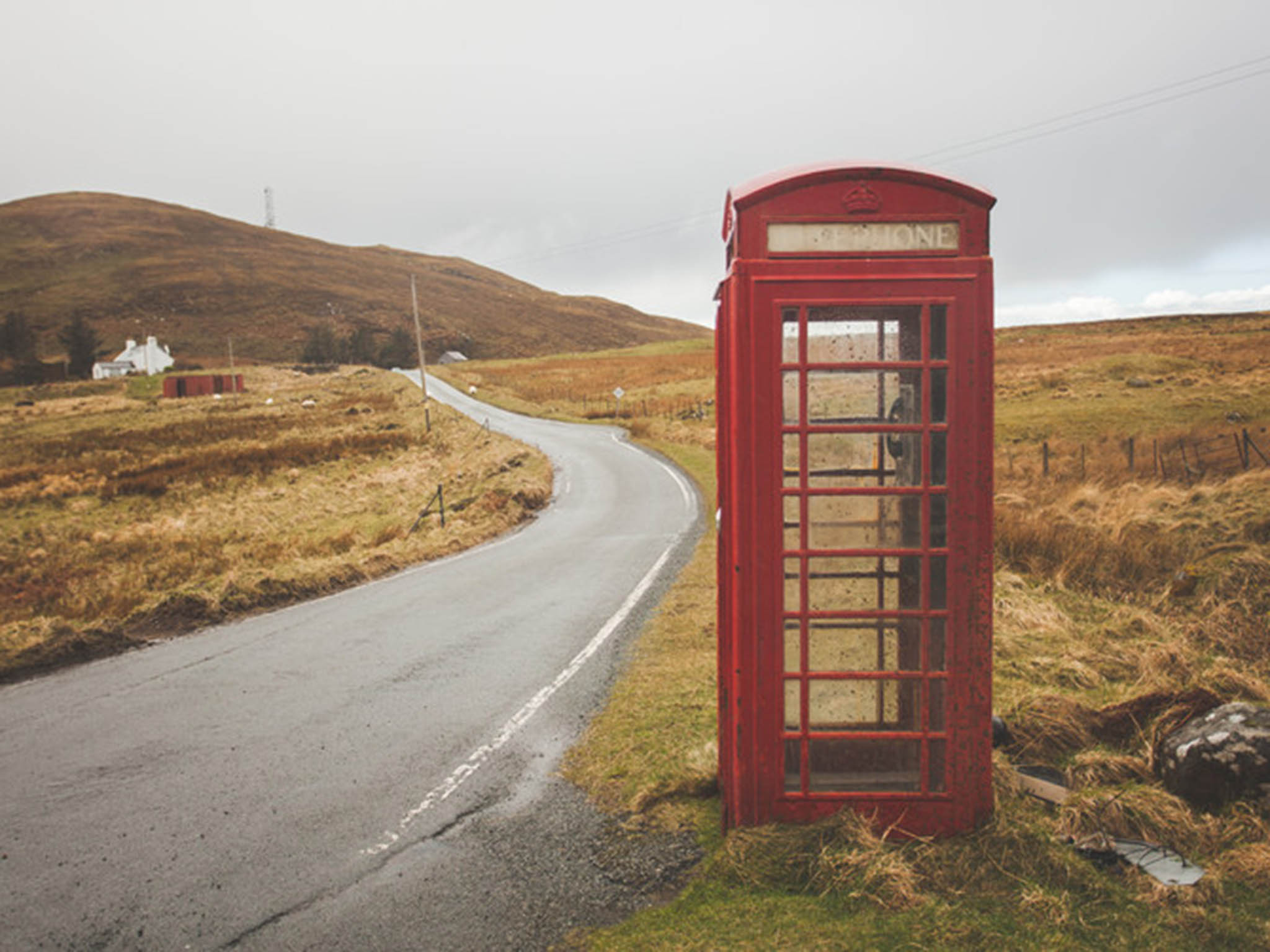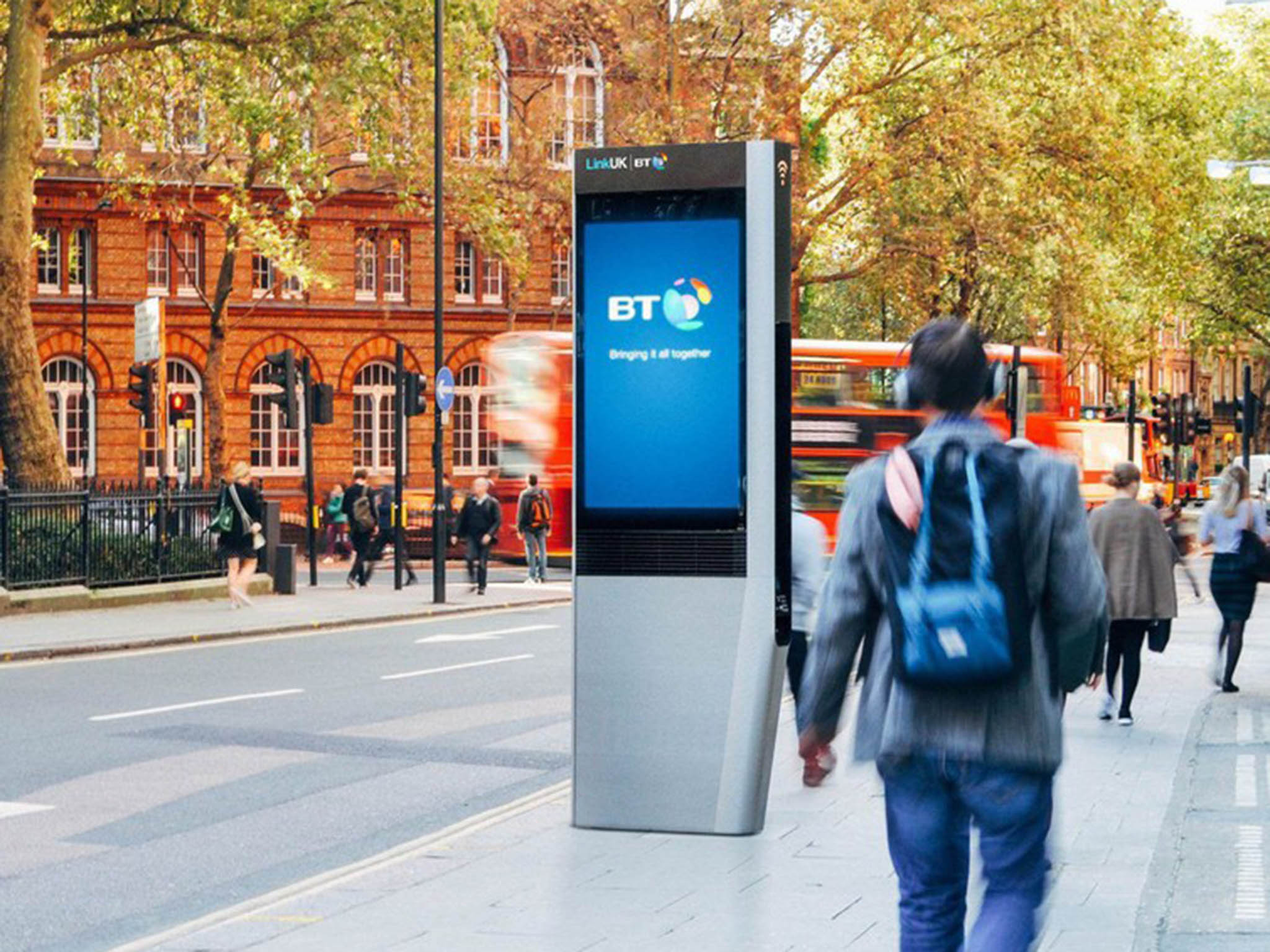The Independent's journalism is supported by our readers. When you purchase through links on our site, we may earn commission.
How the traditional red telephone box is going 21st century
It’s a British icon that is loved by many but used by very, very few – it’s time for an upgrade

Your support helps us to tell the story
From reproductive rights to climate change to Big Tech, The Independent is on the ground when the story is developing. Whether it's investigating the financials of Elon Musk's pro-Trump PAC or producing our latest documentary, 'The A Word', which shines a light on the American women fighting for reproductive rights, we know how important it is to parse out the facts from the messaging.
At such a critical moment in US history, we need reporters on the ground. Your donation allows us to keep sending journalists to speak to both sides of the story.
The Independent is trusted by Americans across the entire political spectrum. And unlike many other quality news outlets, we choose not to lock Americans out of our reporting and analysis with paywalls. We believe quality journalism should be available to everyone, paid for by those who can afford it.
Your support makes all the difference.Oh, the red telephone box. Along with black cabs and fish and chips, it is still considered by many to be a quintessential part of British life – even though the days of shiny red phone boxes on the streets of the UK are long gone.
The growth in home phones and mobile ownership has, of course, taken its toll on the old phone box. The number of phone boxes – as operated by BT – peaked at around 137,000 in the late-1990s before falling year on year to about 46,000 today.
Against this backdrop of declining numbers and a 90 per cent drop in usage over the last decade, you’d be forgiven for thinking that the phone box has had its day and will soon be eradicated.
But nothing could be further from the truth. At least two brand new designs have been proposed for Britain’s streets – intended to repurpose the phone box for the 21st century.
Hold the phone
The phone box we know today first came into existence in 1884, when the postmaster general, Henry Fawcett, allowed telephone companies to establish “public call offices” – also known as payphones. These were open to everyone, rather than just subscribers – as had previously been the case. These new style phones were provided in shops, hotels, post offices and railway stations, and for a few pennies anyone could now make a call.
As their popularity grew so their design evolved. The “public call office” morphed into the phone box and their design was standardised once the vast majority of the country’s telephones fell under the control of the General Post Office in 1912.
That said, it was Giles Gilbert Scott’s 1925 design that set the phone box on the road to becoming an icon. Some of those K2 kiosks still adorn the streets of London, but it was his K6 kiosk, designed to celebrate the Silver Jubilee of King George V, that became the nation’s favourite.
Life, however, wasn’t a bed of roses for Britain’s phone boxes. They suffered badly from vandalism, had been loss-making for years, and by the 1960s were seen as outdated and old-fashioned.
Bruce Martin’s design for the K8 kiosk initially came to the rescue, but the privatisation of British Telecom in 1984 led to a £160m investment programme that radically redesigned Britain’s phone boxes. And large numbers of old red phone boxes were replaced with a range of fairly nondescript aluminium kiosks, known as the KX series.
Phone home?
Against this trend, it might seem odd that a new range of phone boxes will soon hit our streets, especially in the age of smartphones. But under current rules laid down by the telecommunications regulator, Ofcom, both BT and KCOM must fulfil a universal service obligation to provide an “adequate” number of public call boxes.
This requirement exists in part because there are still many people who don’t own or can’t afford to use a mobile phone. For them, phone boxes remain essential. Foreign visitors and workers also often prefer to use a phone box when calling home because the call charges are less when using an international calling card. There are also still many places in the UK where mobile phone coverage is poor. And if your battery is flat, you’d be relived to have access to a phone box in a crisis.
But given their loss-making history, the next generation phone box has had to evolve. The new designs provide much more than basic telephony. For a start, advertising plays an important role.

Many phone boxes already carry adverts, and they generate much needed additional revenue. But the next generation will feature large display screens for digital advertising – a much more cost effective mode of delivery. This opens up huge possibilities for how street advertising can be exploited in the future, as a digital screen can display a commercial advert one minute and then important public information the next.
The new phone boxes are also Wi-Fi enabled, providing a high-speed internet connection hotspot in public spaces. Each new design has an interactive information screen offering helpful information and tourist guides. Naturally, they still contain a public payphone but now include options for charging our mobile devices, too.
From Britain’s first phone boxes to today, our need for, and reliance upon, telecommunications services has grown massively. Fawcett’s vision for opening up those services for public access in 1884 lives on to this day – it’s just the nature of what those services are that has changed.
So while the next generation phone box might look quite different, they are still there to serve the same function. And will help to meet our 21st century needs for connectivity in the same way that the public call office did over 100 years ago.
Nigel Linge, Professor, Computer Networking and Telecommunications, University of Salford This article was originally published on The Conversation. Read the original article.
Join our commenting forum
Join thought-provoking conversations, follow other Independent readers and see their replies
Comments